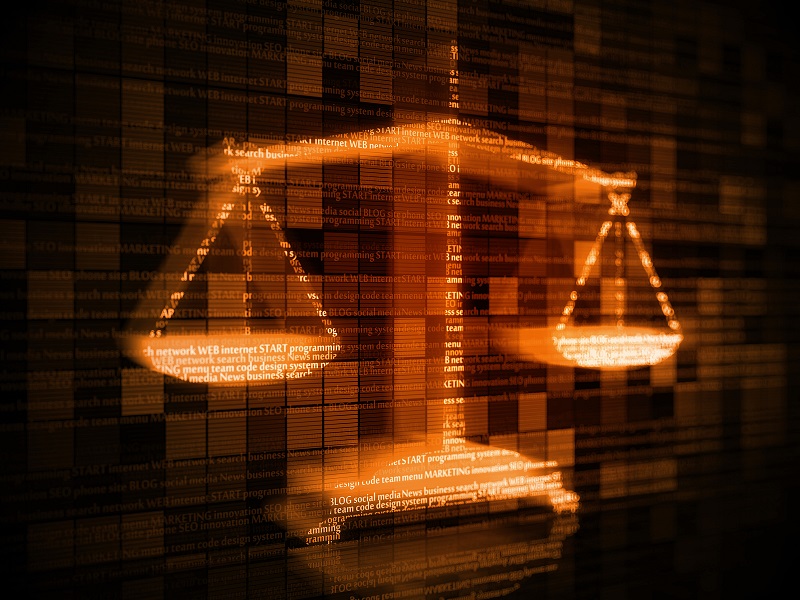The EU Accessibility Act – Two Months to Go!
Published on 6th May 2025
The EU Accessibility Act imposes strict compliance requirements for hardware and services provided to EU consumers, including e-commerce offers, after 28 June 2025. The goal is to improve accessibility in the physical and digital world.

The EU Accessibility Act at a glance
Envision talking e-books, a wireless connection to hearing aids on a new tablet, or ensuring an online shop has assistive technology such as speech recognition software or screen readers. What might still sound like visions of the future for some companies will soon be a legal requirement in the EU under the Accessibility Act ("EAA")[1]. The national provisions will apply after 28 June 2025.
The EAA harmonises various accessibility requirements within the EU – or introduces them for the first time. The EAA includes a broad range of legal obligations, from design requirements to product information and documentation obligations.
While EU legislation on accessibility previously applied primarily to public bodies, the EAA extends the remit to the private sector for the first time.
Compliance violations are highly visible, expensive, and can result in significant enforcement action, as the Member States are obliged to set effective, proportionate and dissuasive sanctions. In addition to regulators, competitors or consumer protection organisations can also take action in many Member States. Enforcement measures go beyond traditional fines and include product withdrawals and bans, and other dissuasive actions.
In case implementation projects have not yet been started, companies should therefore familiarise themselves with the requirements now. The specific requirements are highly complex and may require a long lead time.
- EAA in a Nutshell
- The EAA is an EU directive (2019/882) that each Member State had to transpose into national law. Enforcement in particular lies with the individual Member States.
- The EAA requirements only apply to selected products and services (e.g. the entirety of e-commerce and a wide range of electronic hardware) that are placed on the market or provided after 28 June 2025.
- There are limited transitional periods of up to 5 years for services: (a) for products used to provide services that were placed on the market prior to 28 June 2025, and (b) for service contracts in existence before this date.
- There are also exemptions where compliance demands "fundamental changes" to products and services or imposes disproportionate burdens arising from implementation costs. However, businesses must proactively inform regulators in case they want to rely on such exemptions.
- Presumptions of conformity apply where businesses comply with harmonised standards. The relevant standards are currently still being updated and/or drafted. For websites, the requirements are expected to be closely aligned with WCAG 2.2.
Which products are affected?
The requirements of the EAA do not apply to all products, but only to an exhaustive list of products:
- Specific hardware: The directive covers so-called hardware systems for universal computers, including operating systems. This includes classic desktop computers and end devices such as laptops, smartphones and tablets.
- Devices for electronic communication: This includes products with interactive features that are used for electronic communication services, such as mobile phones, tablets, modems or routers.
- TV sticks, games consoles, etc: This also includes consumer devices with interactive features that are used to access audiovisual media services.
- E-book readers: Portable reading devices should also be usable by people with reading impairments, including visual impairments, for example, by being equipped with voice output.
- Self-service terminals: These primarily include cash, ticket, information and check-in machines.
The requirements relate to the products themselves, such as the design of the user interfaces and functionalities, but they also go beyond this. For example, the EAA also specifies requirements for installation instructions and packaging.
The obligations can apply to the manufacturer, authorised representative, importer and distributor. This means that the requirements may affect companies outside the EU, where they are offering their products to consumers in the EU. In addition to the design obligations, a product must, for example, have a CE marking and conformity must be technically documented.
Which services are affected?
Various services that form an important part of daily life are also covered. The services concerned include:
- Online commerce: The case group of "e-commerce services" covers all services that are provided with a view to concluding a consumer contract in e-commerce. For example, online sales of products, or services such as booking a taxi ride via an app.
- Access services for streaming and television programmes: This includes services that enable access to audiovisual media services, including certain functions that have been implemented for accessibility. Electronic programme guides are also explicitly included.
- Telecommunications services: This includes normal voice telephony, but also internet telephony, along with other forms of digital communication such as email, chat or SMS.
- Banking services for consumers: This includes consumer credit agreements, services related to financial instruments, payment services, payment accounts and e-money.
- E-books including software: e-books and e-book software are in scope services.
- Passenger transport by air, bus, rail and ship: This applies to websites, apps, e-tickets and ticketing services. Travel information and interactive self-service terminals must also be made accessible, as well as information on the accessibility of the means of transport and the surrounding infrastructure (lifts, ramps, etc.).
For all the above services, all the related websites and apps must be perceivable, operable, understandable and robust.
What are the exceptions?
Despite the comprehensive requirements, there are some exceptions to the scope of application that companies can invoke. Firstly, specific website and app content, such as map services, archives or certain third-party content, are excluded.
Further specific exceptions are:
- Microenterprises (comprehensive for services, partial relief for products);
- Where compliance would lead to a "fundamental alteration" to a product or service; or
- Where compliance would impose a disproportionate economic burden (based on a cost/benefit test set out in the EAA).
Enforcement and sanctions
Market surveillance authorities in each Member State are to check that companies comply with the requirements. Consumers also have the opportunity to report violations to authorities or courts. Consumers can also be represented by an association or a qualified organisation. Violations can also lead to cease and desist letters in some jurisdictions.
Businesses that operate in several Member States may also be subject to turnover-based fines under the EU-Omnibus Directive.
Next Steps: Priorities for the next two months
There are only two months left until the national regulations for accessibility requirements become applicable after 28 June 2025. Companies should therefore use the remaining time to take the following implementation steps:
Step 1: Check whether your products and services are in scope
- For all products and services offered, companies should check whether they fall within the scope of the EAA. As the legal text leaves some questions unanswered, there may be borderline cases where the question of applicability is not immediately obvious.
- Possible exemptions should be considered.
- Possible transitional periods should be determined.
Step 2: Map out applicable accessibility requirements
- The relevant obligations under the EAA should be determined and broken down based on the applicable products and services and the domestic legislation in the Member States where those products and services are offered. This may require review of elements including the specific technical design of the products and services and the information and labelling in relation to such products and services.
- In the product area in particular, the company's own role should be identified, as the density of duties is affected by the position in the supply chain.
- The question of whether existing contracts with consumers need to be adapted or products phased out or replaced is also relevant.
Step 3: Set up project(s) with internal and supply chain stakeholders
- The implementation of the EAA requires the involvement of different business teams, such as programmers, user experience designers, possibly from marketing or customer service. The internal implementation should be organised across teams at an early stage.
- In the product area, the interaction with other relevant players in the supply chain should be coordinated, for example between the manufacturer and importer.
Osborne Clarke Comment
Given the breadth of the EAA, companies should consider their implementation requirements under this new legislation as soon as possible for any new products or services being offered to consumers in the EU. Companies should also be aware that the geographical scope of this new law may be wider than just within the EU, possibly catching manufacturers and producers from outside the EU where they are looking to sell into the EU market.
Finally, it bears repeating that this is a brand-new legal regime covering a wide range of sectors and varieties of product or service. Some of the key concepts and terminology in the EAA are complex or ambiguous and will need careful analysis to understand how they apply to your business. At this stage there is limited guidance at EU or Member State level.
If you think you fall in scope of the new EAA, get in contact with your Osborne Clarke contact, or any of the contacts listed below who would be happy to help. We are assisting multiple clients in developing structured and risk-based approaches to compliance ahead of go-live after 28 June 2025.
[1] Directive (EU) 2019/882 of the European Parliament and of the Council of 17 April 2019 on the accessibility requirements for products and services.


















